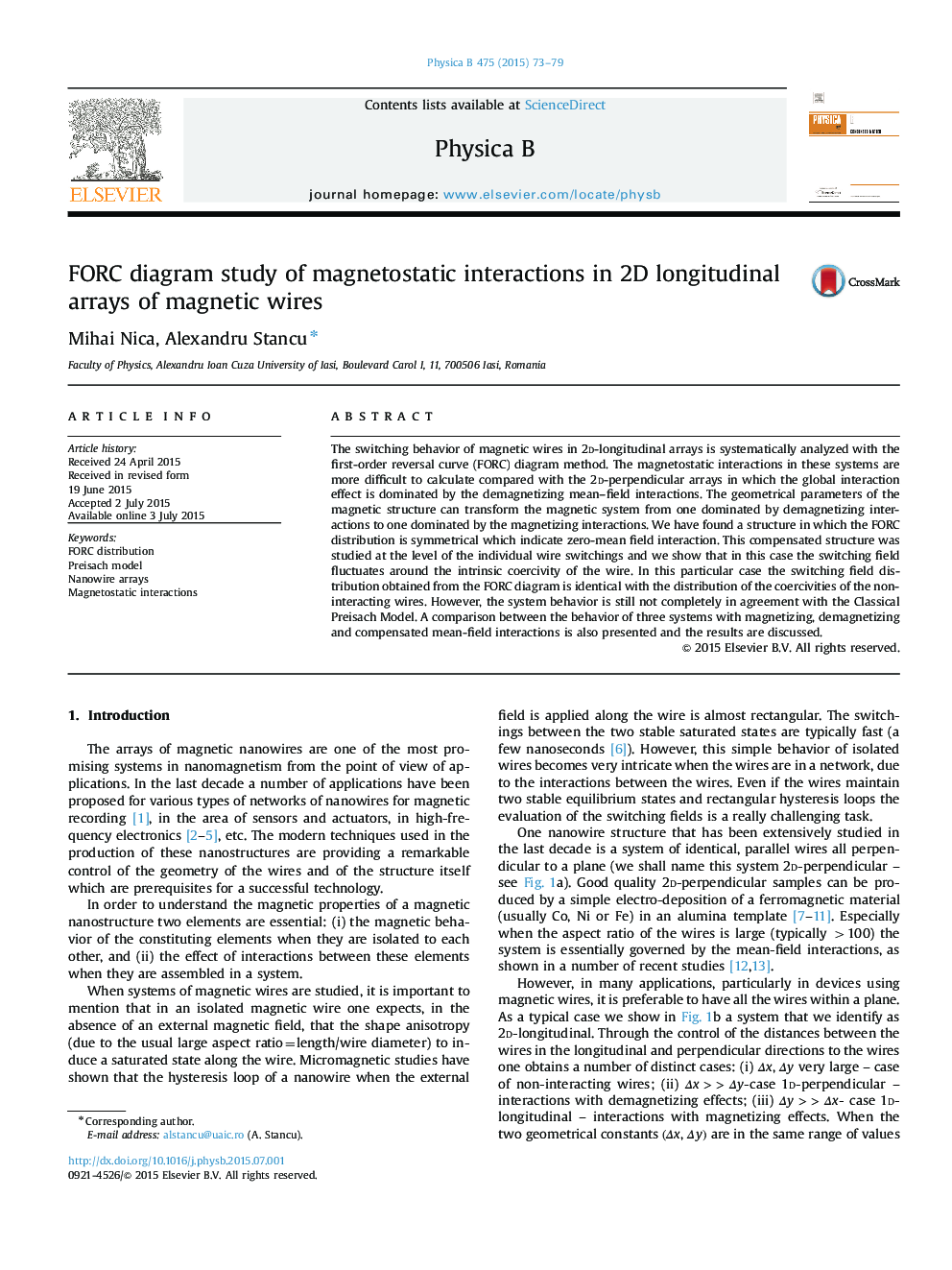| کد مقاله | کد نشریه | سال انتشار | مقاله انگلیسی | نسخه تمام متن |
|---|---|---|---|---|
| 1808794 | 1525174 | 2015 | 7 صفحه PDF | دانلود رایگان |

The switching behavior of magnetic wires in 2d-longitudinal arrays is systematically analyzed with the first-order reversal curve (FORC) diagram method. The magnetostatic interactions in these systems are more difficult to calculate compared with the 2d-perpendicular arrays in which the global interaction effect is dominated by the demagnetizing mean–field interactions. The geometrical parameters of the magnetic structure can transform the magnetic system from one dominated by demagnetizing interactions to one dominated by the magnetizing interactions. We have found a structure in which the FORC distribution is symmetrical which indicate zero-mean field interaction. This compensated structure was studied at the level of the individual wire switchings and we show that in this case the switching field fluctuates around the intrinsic coercivity of the wire. In this particular case the switching field distribution obtained from the FORC diagram is identical with the distribution of the coercivities of the non-interacting wires. However, the system behavior is still not completely in agreement with the Classical Preisach Model. A comparison between the behavior of three systems with magnetizing, demagnetizing and compensated mean-field interactions is also presented and the results are discussed.
Journal: Physica B: Condensed Matter - Volume 475, 15 October 2015, Pages 73–79